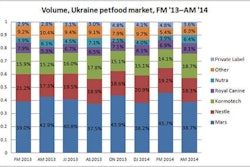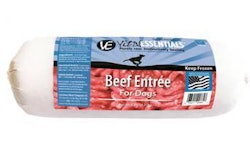First, the good news for petfood safety: The US Food and Drug Administration (FDA) seems to have carefully considered comments it received on the Current Good Manufacturing Practices and Hazard Analysis and Risk-Based Preventive Controls for Food for Animals rule it proposed as part of the Food and Safety Modernization Act (FSMA) and issued in October 2013. In fact, the agency is even proposing revisions to the rule—along with four others under FSMA—based on that feedback.
The bad news? According to the American Feed Industry Association (AFIA), complying with the rule will likely still be costly for many petfood and feed companies, especially in comparison with any benefits received. “FDA seriously underestimated the cost of the proposed rule and the additions within this re-proposal have the potential to drive that cost up even further,” said Richard Sellers, AFIA senior vice president of legislative and regulatory affairs. “AFIA is committed to advocate for a final rule that is appropriate for the low risk that animal food presents. The cost-benefit ratio is nearly 20-to-1, and federal laws require the costs to reasonably approximate the benefit.”
Still, I find it encouraging that FDA listened to input from industry, the public and others and, seemingly, took it to heart. AFIA and other organizations and stakeholders, such as the Pet Food Institute, invested a good deal of time, effort and resources in reviewing, discussing and responding to the original proposed rule. Even AFIA concedes that, at first review, FDA incorporated many of the changes the feed organization recommended in its comments on the originally proposed rule.
What are those changes? Some key revisions, according to FDA, are:
- Current good manufacturing practice regulations (CGMPs) are more applicable to the animal food industry, provide flexibility for a wide diversity in the types of animal food facilities and establish standards for producing safe animal food. This was a chief area of concern from the petfood and feed industries with the originally proposed rule, which borrowed heavily from CMGPs for human food.
- A “very small business,” which would be exempt from most elements of the proposed preventive control rule, is now defined as having less than US$2.5 million in total annual sales of animal food, adjusted for inflation. Previously, FDA proposed three options: annual sales of US$500,000, US$1 million or US$2.5 million. Even with settling on the higher figure, FDA says it would exempt less than 2% of the dollar value of all animal food produced in the US.
- Potential regulatory language for product testing, environmental monitoring, supplier controls offered for public comment—these potential provisions were referenced in the preamble of the proposed rule but were not in the regulatory text. FDA is now providing an opportunity for input on specific proposed language and seeking comment on whether to include it in the final rule.
Other revisions involve further development of withdrawal of qualified exemptions process, proposed language for economically motivated adulteration and feed mills associated with farms.
FDA also issued compliance dates for the preventive control rule for animal food; it’s not clear if these are proposed dates or simply a notification of the mandated dates:
- A small business—employs fewer than 500 persons and does not qualify for an exemption—would have to comply two years after publication of the final rule.
- A very small business, having less than US$2.5 million in total annual sales of animal food, adjusted for inflation, would have three years to comply. As “qualified facilities,” they would be subject to modified requirements for preventive controls.
- Other businesses would have to comply one year after publication of the final rule.
Finally, and perhaps most importantly, public comment on the re-proposed rule open September 29; FDA will accept comments for 75 days. You can comment at Regulations.gov.















